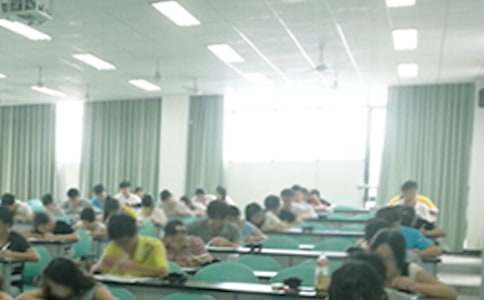- 相关推荐
2017年托福考试阅读理解专项练习及答案
如果学习只在于模仿,那么我们就不会有科学,也不会有技术。下面是小编为大家搜索整理的2017年托福考试阅读理解专项练习及答案,希望能给大家带来帮助!更多精彩内容请及时关注我们应届毕业生考试网!

(一)
The sculptural legacy that the new United States inherited from its colonial predecessors was far from a rich one, and in fact, in 1776 sculpture as an art form was still in the hands of artisans and craftspeople. Stone carvers engraved their motifs of skulls and crossbones and other religious icons of death into the gray slabs that we still see standing today in old burial grounds. Some skilled craftspeople made intricately carved wooden ornamentations for furniture or architectural decorations, while others caved wooden shop signs and ships' figureheads. Although they often achieved expression and formal excellence in their generally primitive style, they remained artisans skilled in the craft of carving and constituted a group distinct from what we normally think of as "sculptors" in today's use of the word.
On the rare occasion when a fine piece of sculpture was desired, Americans turned to foreign sculptors, as in the 1770's when the cities of New York and Charleston, South Carolina, com#missioned the Englishman Joseph Wilton to make marble statues of William Pitt. Wilton also made a lead equestrian image of King George III that was created in New York in 1770 and torn down by zealous patriots six years later. A few marble memorials with carved busts, urns, or other decorations were produced in England and brought to the colonies to be set in the walls of churches — as in King's Chapel in Boston. But sculpture as a high art, practiced by artists who knew both the artistic theory of their Renaissance-Baroque-Rococo predecessors and the various technical procedures of modeling, casting, and carving rich three-dimensional forms, was not known among Americans in 1776. Indeed, for many years thereafter, the United States had two groups from which to choose — either the local craftspeople or the imported talent of European sculptors.
The eighteenth century was not one in which powered sculptural conceptions were developed. Add to this the timidity with which unschooled artisans — originally trained as stonemasons, carpenters, or cabinetmakers — attacked the medium from which they sculpture made in the United States in the late eighteenth century.
1. What is the main idea of the passage ?
(A) There was great demand for the work of eighteenth-century artisans.
(B) Skilled sculptors did not exist in the United States in the 1770's.
(C) Many foreign sculptors worked in the United States after 1776.
(D) American sculptors were hampered by a lack of tools and materials.
2. The word "motifs" in line 3 is closest in meaning to
(A) tools
(B) prints
(C) signatures 签名
(D) designs
3. The work of which of the following could be seen in burial grounds?
(A) European sculptors
(B) Carpenters
(C) Stone carves
(D) Cabinetmakers
4. The word "others" in line 6 refers to
(A) craftspeople
(B) decorations
(C) ornamentations
(D) shop signs
5. The word "distinct" in line 9 is closest in meaning to
(A) separate
(B) assembled
(C) notable
(D) inferior
6. The word "rare" in line 11 is closest in meaning to
(A) festive
(B) infrequent
(C) delightful
(D) unexpected
7. Why does the author mention Joseph Wilton in line 13?
(A) He was an English sculptor who did work in the United States.
(B) He was well known for his wood carvings
(C) He produced sculpture for churches.
(D) He settled in the United States in 1776.
8. What can be inferred about the importation of marble memorials from England?
(A) Such sculpture was less expensive to produce locally than to import
(B) Such sculpture was not available in the United States.
(C) Such sculpture was as prestigious as those made locally.
(D) The materials found abroad were superior.
9. How did the work of American carvers in 1776 differ from that of contemporary sculptors?
(A) It was less time-consuming
(B) It was more dangerous.
(C) It was more expensive.
(D) It was less refined.
参考答案
1-5 BDCAA 6-9 BABD
【托福考试阅读理解专项练习及答案】相关文章:
英语阅读理解专项练习题及答案10-31
初二语文阅读理解专项练习题及答案11-07
小升初英语阅读理解练习题及答案06-09
语文阅读理解练习题02-06
英语阅读理解习题及答案10-18
托福考试阅读真题模拟练习04-13
关于大学四级英语阅读理解练习题及答案07-17